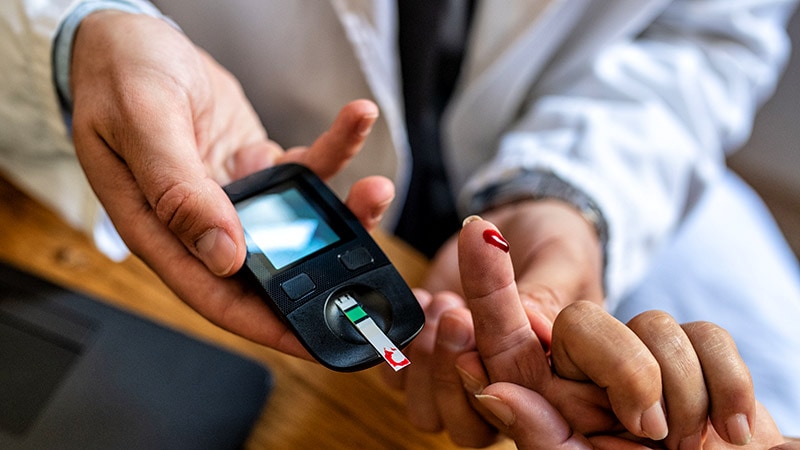Takeaway
- In patients with type 2 diabetes (T2D), plasma n-3 fatty acids were associated with a reduction in the risk of macrovascular disease and mortality.
- Docosahexaenoic acid (DHA) was associated with a lower risk of macrovascular disease.
- Findings support the cardioprotective effects of plasma n-3 fatty acids and DHA, and further merit evaluating the role of high-dose supplementation with n-3 fatty acids in patients with T2D.
Study design
- This biomarker case-cohort study included 3576 patients with T2D who participated in the ADVANCE study.
- Primary outcomes: major macrovascular (composite of cardiovascular (CV) death, non-fatal myocardial infarction, and stroke) and microvascular (composite of new or worsening nephropathy or retinopathy) events and mortality.
- Funding: The Chest Heart and Stroke Association Scotland and others.
- 654 macrovascular events, 341 microvascular events, and 631 deaths were reported during a median follow-up of 5 years.
- After adjustment for traditional cardiovascular risk factors, plasma n-3 fatty acids were associated with a lower risk of macrovascular events (HR, 0.87 [95% CI, 0.80-0.95] per 1 standard deviation [SD] higher percentage) and mortality (HR, 0.91 [95% CI, 0.84-0.99] per 1 SD higher percentage).
- DHA was linked to a lower risk of macrovascular events (HR, 0.88 [95% CI, 0.81-0.96] per 1 SD higher percentage).
- Plasma n-3 fatty acids and DHA were associated with a lower risk of:
- CV death (HR, 0.85 [95% CI, 0.75-0.96] and HR, 0.86 [95% CI, 0.76-0.98] per 1 SD higher percentage, respectively); and
- non-fatal stroke (HR, 0.82 [95% CI, 0.69-0.97] and HR, 0.82 [95% CI, 0.69-0.97] per 1 SD higher percentage, respectively).
- No statistically significant associations were observed between any fatty acids and microvascular events.
- Results may have limited generalisability.
- Risk of bias.
References
References



